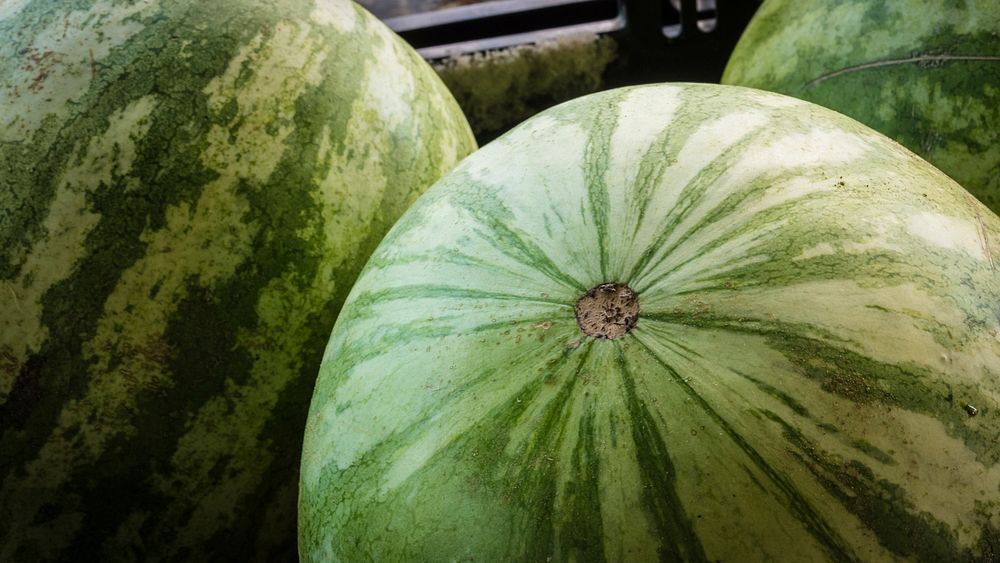
Watermelon such as these from the vendors at the U.S. Department of Agriculture (USDA) are used for the USDA Farmers Market's VegU educational tent demonstration of a Watermelon, Cucumber, and Basil Salad on Friday, July 15, 2016, in Washington, D.C.
A "VegUcation" can be received at the ‘VegU' tent, where educators ‘VegUcators’ demonstrate free 10-minute fruit and vegetable classes taught by U.S. Department of Agriculture (USDA) employees from the Agricultural Marketing Service (AMS), Food and Nutrition Service (FNS), and Food Safety and Inspection Service (FSIS)
During this season of the outdoor USDA Farmers Market, 26 recipes will be taught at the VegU tent.
Federal employees and public visitors can get a “VegUcation” and learn how to pick, prepare and store the featured seasonal fruit or vegetable. The scheduled demonstration dates are the peak harvest time to look for these foods.
The goal is to increase fruits and vegetables in meals and help the customers understand what is in season.
Guests can receive a free recipe card, and can start shopping for ingredients at the market.
www.usda.gov
peoplesgarden.usda.gov
@USDA_AMS
#USDAFarmersMkt
www.usda.gov/farmersmarket
USDA Media by Lance Cheung.
------------------------
Yields 4 to 6 servings
Prep Time: 15 minutes | Cook Time: 0 minutes | Total Time: 15 minutes
6 cups watermelon
1 cup cucumber
2 tbsp red onion
1 tbsp red wine vinegar
2 tsp olive oil
2 tbsp basil leaves
salt and pepper, to taste
1. Scrub outside of watermelon and let dry. Cut the
fruit flesh into 2-inch cubes.
2. Wash and dice cucumber. Peel and finely dice
onion. Chop basil.
3. Toss watermelon, cucumber, onion, and basil with
vinegar and oil. Add salt and pepper to taste.
Serve immediately or cover and refrigerate until
ready to serve. Leftovers will keep 1 to 2 days and
become quite juicy.
• The Cucurbitaceae is an important food plant family and includes cucumber, gherkins, melons, gourds, marrows, squashes, and
pumpkins. The fruit, which is botanically called a ‘pepo’ is used as a vegetable or dessert, but other parts of the plant (young leaves,
shoots, seeds, and root) may also be consumed as food. The fruit contains a large amount of water and a reasonable amount of vitamin C. Cucurbits are usually climbing plants.
• The classification of melons (Cucumis melo) is based on fruit
characteristics (surface and flesh) but, because of hybridization, it is not always easy to distinguish between the groups. There are three main cultivar groups of melon: (1) musk melons are distinctly netted, with a raised network on the surface of the skin generally lighter than the overall color of the fruit such as ‘Galia’ melons; (2) cantaloupe melons have a warty or scaly skin but are not netted; (3) winter melons are either smooth or shallowly corrugated but not netted like the popular ‘Honey Dew’ melons.
• The scientific name for watermelon is Citrullus lanatus.
. Original public domain image from Flickr